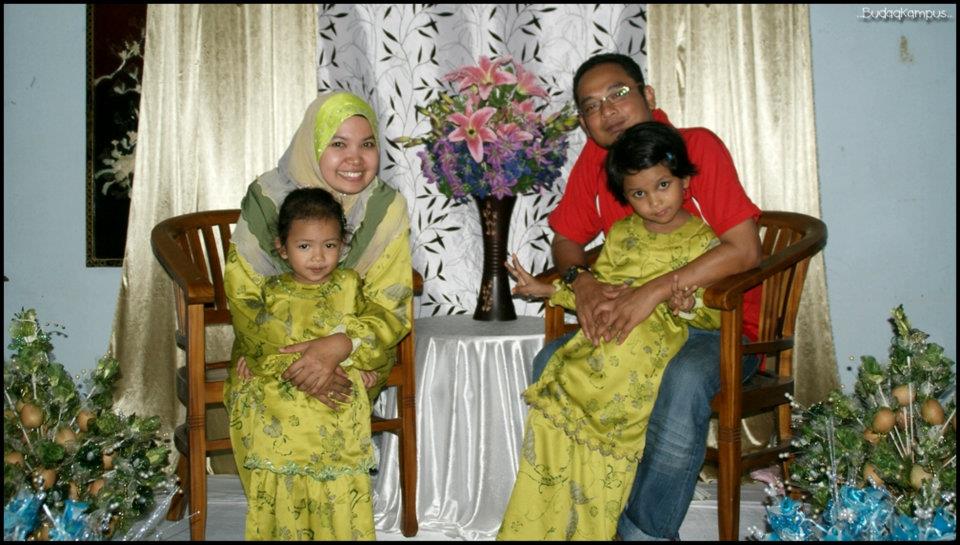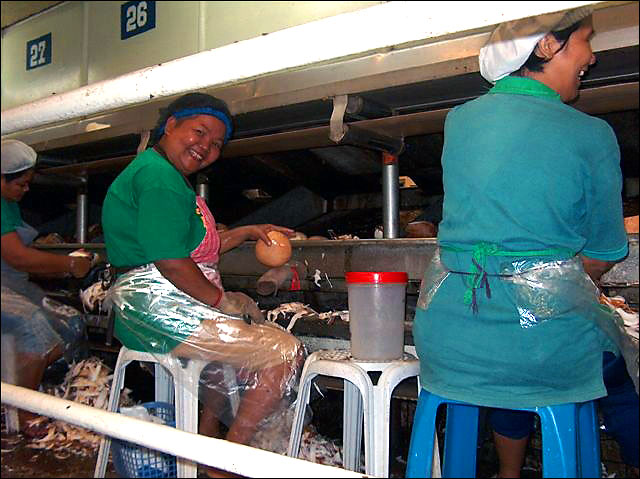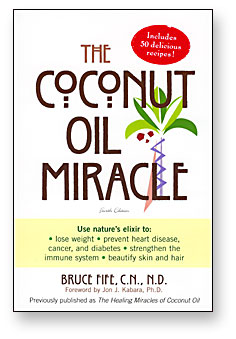Could you imagine being unemployed, homeless, and forced to beg in the
streets for food? Not a pleasant thought is it? But this is the life
many people face throughout the world. Millions of poverty stricken
children and their families go to bed hungry each night not knowing
where their next meal is coming from. Often, it is found in the refuge
discarded by others as unfit to eat. Half naked children as young as 3
and 4 years of age roam the streets begging for food. If you live in an
affluent country like the US, sights like this are rare, but in Third
World counties they are common.
The plight of these people was made clearly evident to me when I made my
first trip to Asia. My heart went out to the many underweight and
malnourished children begging for food. No one should be forced to live
like this, I thought. I wanted to help, but how? How could one person
help so many in need? By myself I could do little. This was a global
issue. The solution would require a global effort—a task far beyond my
limited capability. I felt helpless.
Although I didn't realize it at first, the answer to the problem, or at least a partial answer, was staring me
right in the face. The solution? It was simple—coconut. Yes, coconut was
the answer. The reason I had come to Asia was to teach the people about
the nutritional and medicinal benefits of coconut. This is an abundant
and renewable, natural resource that has been vastly underdeveloped.
My Discovery
Without realizing it, I had been working on the answer for some time.
Like most everyone else, I used to believe that coconut, especially
coconut oil, was unhealthy because it was high in saturated fat. But
then I had an experience that changed the way I think about fats and
oils and particularly about coconut oil. Some years ago a colleague of
mine, a nutritionist, told me that coconut oil was one of the good fats,
that it did not cause heart disease, and that it had many health
benefits. At first I was shocked. This went against everything I had
ever read in the newspaper and in the popular diet books. But this
nutritionist showed me some studies in the medical literature that
indicated that coconut oil had many important nutritional and medical
uses. Coconut oil, in one form or another, was used in hospital IV
solutions, it was added to infant formula, and used in anti-candida
medications. I became curious. If coconut oil had so many nutritional
and medical uses why is it considered a dietary nightmare? If it did
cause heart disease why is it used in hospital IV solutions and given to
newborn babies. It just didn't make sense. I had to find the answer.
Since everyone seemed to know that coconut oil caused heart disease I
was certain that there must be many magazine articles written on the
subject. Many of which would outline the dangers of using coconut oil
and cite references to studies backing up these facts. So I went on a
search to find some of these articles. I went on the Internet and to the
library and looked for everything I could on coconut oil. Do you know
what I found? I found absolutely nothing! It seemed that at that time
there no articles written specifically on coconut oil. Now I did find
many articles on nutrition and dietary oils, and most of them did
contain one sentence about coconut oil and that sentence was exactly
alike in all of them. It was, "Coconut oil is a saturated fat and causes
heart disease." I ran across that statement over and over again. I still
see that very same statement repeated now. It was like there was a royal
decree that went out throughout the land dictating that if anyone wrote
anything about nutrition they must include this statement on coconut
oil—it's the politically correct thing to do.
Even though I ran across this statement time and time again, not once
did any of these authors ever back up that statement with any facts, any
figures, or any citations to the medical literature. There weren't even
any anecdotal accounts. When I started this search I fully expected to
read stories where people had used coconut oil since they were little
children and by the time they were 30 years old they had raging heart
disease. But there wasn't anything like that. It became obvious to me
that these doctors and nutritionists who were writing these things knew
absolutely nothing about coconut oil. All they were doing was repeating
what someone else had said, who in turn was just repeating what someone
else said before them, and on and on. None of them bothered to do their
own research but just blindly accepted what others were saying.
It became apparent to me that if I was going to learn the truth about
coconut oil, I wasn't going to find it in health books and magazine
articles because none of these authors knew anything about it. If I was
going to learn the truth about coconut oil I was going to have to go to
the medical studies and see what researchers were actually discovering.
That's what I did. In my search through the medical literature I found
hundreds of research articles on coconut. And what I found shocked me. I
discovered why coconut oil, in one form or another, was used in hospital
IV solutions, why it was added to infant formula, and used in anti-candida
medications. I also learned it was recommended for those with digestive
concerns, such as premature infants and cystic fibrosis patients, and
that it could help prevent a wide variety of health problems ranging
from
cancer and diabetes to influenza and AIDS.
I was amazed! I also learned that there was absolutely no truth
whatsoever in the belief that coconut oil causes or even contributes to
heart disease. I failed to find even a single study that proved that
coconut oil consumption caused heart disease. No such study exists. In
fact, what I learned was that
coconut oil can help prevent heart
disease!
I learned that coconut oil has had a long history of use throughout the
world as both a food and as a medicine. People in coconut growing
regions of the world have been using it for hundreds of years without
suffering from heart disease. In fact, those people who use the most
coconut oil have the lowest heart disease rates in the world. For
example, up until a few years ago the people of Sri Lanka used coconut
oil in all their cooking. Each person consumed about 120 coconuts a
year. Despite this high rate of consumption they had the lowest heart
disease death rate in the world—1 out of every 100,000. Compare that to
Americans who eat essentially no coconut oil yet nearly 1 out of every 2
deaths is heart related.
The Economic Impact of the Anti-Coconut Campaign
The truth of the matter is that if you want to protect yourself from
heart disease, you should be using coconut oil. What an incredible
discovery! So why had we been told that coconut oil causes heart
disease? The answer is a combination of misconception, ignorance, and
greed.
Since the 1950s it was observed that some saturated fats tend to raise
blood cholesterol. Since cholesterol levels were considered a risk
factor for heart disease doctors were recommending that we reduce our
saturated fat intake. The vegetable oil industry promoted this idea very
aggressively in order to influence people to use vegetable oil in place
of saturated fats. Since the tropical oils (coconut and palm) were
highly saturated they were viewed as being unhealthy and even causing
heart disease, even though no study had ever shown it.
Up until the mid-1980s coconut oil was commonly used in many foods. The
anti-saturated fat campaigns
sponsored by the soybean industry and misguided special interest groups
succeeded in frightening the public away from using coconut oil and food
manufacturers and restaurants eventually replaced it with hydrogenated
soybean oil. By 1990 coconut had virtually disappeared from American and
European diets. Even in coconut growing regions of the world, such as
Malaysia and the Philippines, coconut oil was viewed as an
artery-clogging fat and largely avoided. As a consequence, demand for
coconut products plummeted and the coconut industry fell into a deep
depression that lasted for two decades. Coconut farmers unable to sell
their products stopped harvesting. Literally millions of farmers,
pickers, consolidators, truckers, and processors were no longer able to
earn a living. Many took on other jobs, if they could find them. Others
continued working in the coconut industry because other jobs were
unavailable. They barely eked out a living year by year on a pauper's
wage. Many out of work and underemployed parents could not properly feed
and clothe their children. They turned to begging in the streets.
The connection between heart disease and coconut oil that frightened so
many people never existed. What most people didn't understand at the
time was that there are many different types of saturated fat and that
the fat in coconut oil is completely different from that found in animal
fats. This difference is important because it's what makes coconut oil
unique and gives it its remarkable healing properties.
As I learned about the healing potential of coconut oil I began using it
myself and recommend to others. I've saw it clear up hemorrhoids, stop
bladder infections, remove precancerous skin lesions, reverse the
effects of hypothyroidism and diabetes, and help people lose excess
weight, among other things. There seemed to be no end to
the miracles it
could do.
The Coconut Oil Miracle
After learning all of this, I realized that few people outside of the
research community knew about the healing miracles of coconut oil. I
felt an obligation to share this knowledge with others. So I wrote the
book
The Coconut Oil Miracle. Most all the information in this
book comes directly from the medical literature and my own experience.
Everything is backed by medical studies, many of which are cited in the
book. I purposely wrote it in easy-to-understand language so that the
laymen could understand.
When I finished the manuscript I gave it to a prominent lipid researcher
and asked him to review it for accuracy and content. He praised the book
but said, "Don't publish it."
I was shocked. "Why? It's accurate isn't it?"
"Yes," he replied, "but nobody will read it. If you publish this book
you'll just be wasting your time and money."
He spoke from experience. He had known about the benefits of coconut oil
for years, whenever he spoke favorably about coconut oil he was either
ignored or ridiculed. He learned to keep silent.
He was trying to protect me from criticism as well as wasting my money
in financing the publication of the book. Despite his warning, I felt a
need to get this information out to the public. The health benefits of
coconut were so remarkable that I couldn't keep this knowledge locked
away in research journals, inaccessible to the average person. I decided
that even if the book didn't sell, at least I could say I tried. Because
coconut oil offered so many health benefits I felt confident that if the
facts were presented in a logical, easy-to-read format, backed by
decades of medical research, the book would find a receptive audience,
even if only a small one.
Because the book went against the prevailing opinion about fats, I knew
from the start that I would face criticism and ridicule. That didn't
stop me. As I think back on it now, it was a bold and crazy move on my
part. Why would anyone knowingly publish a book that would generate
scorn? I just felt a need to share this knowledge despite the risks.
I didn't bother to send the manuscript to an established publisher
because I knew none of them would dare touch it—too risky for them.
Finding money to publish the book myself was another problem. It would
require several thousand dollars. Money I just didn't have at the time.
So I began to save. I tightened our family's budget. We ate more
economically and cut corners, reducing expenses to a bare minimum.
At first, sales were slow. The title scared people away. Stores didn't
want to stock it. Few could accept the idea that coconut oil was
healthy. People thought I was crazy. A few people laughed at me thinking
the book was a joke. Some were even angered that I would publish such a
book and criticized me. Articles in newspapers and health newsletters
reemphasized the politically correct, but inaccurate, perception of
coconut oil and raked me across the coals with false accusations in an
attempt to ruin my credibility.
My saving grace was that if I could get someone to just read the book
and see the evidence for themselves, they generally become converted. I
let the facts speak for themselves. This was clearly demonstrated to me
by an incident that occurred soon after the book was published. I gave a
copy to one of my neighbors. Cautiously he took the book and with
skepticism promised to read it. He became an immediate convert. He was
so enthusiastic about the potential of coconut oil that he began telling
others about it. He went to his nutritionist and showed her the book.
When she saw it she scoffed, "That's just somebody's opinion. Coconut
oil is no good," she said. She refused to even look at it.
He begged her to read the book and give it a fair trial. Hesitantly she
consented. He placed the book on her desk and left. The following week
he returned to her office and found the book positioned exactly were he
had left it. Obviously she had not even touched the book. Again he
insisted that she read it. Again she objected, but eventually gave in.
Before leaving he made her promise that she would read it by the time he
returned. To keep him off her back she reluctantly agreed.
When she started to read the book she was immediately impressed by the
logical and approach and the abundance of medical references that backed
up each statement. She devoured the book in two days. She wanted to know
more. She contacted me and we had many discussions about fats and oils.
I opened her eyes. She changed her approach to nutritional counseling
and began recommending the book to all of her patients. That's what
happens when people read the book. They become excited and tell others.
Those who criticize me or the book do so because they haven't read it.
They are too closed-minded.
At first I found it impossible to get any media coverage or book
reviews. No one in the media would touch it. The book began selling by
word of mouth and interest slowly grew. People began using the oil and
experiencing changes. Many people with chronic health problems found
relief. Personal testimonials encouraged others to read the book. As
interest grew I was able to get more notice in newspapers and magazines.
Several excellent articles appeared in national magazines. Demand for
good quality coconut oil was rapidly increasing. Because people wanted
the oil for health reasons they were going to health food stores to look
for it. When the book was first published coconut oil was almost
impossible to find anywhere. Very few stores carried it and when they
did, it was always in the cosmetic section and sold as a body oil. Today
nearly every heath food store in North American and many pharmacies
stock food grade coconut oil. Some carry as many as 5 or 6 different
brands. Coconut oil has now come out of the closet and is staking it's
rightful claim as "the healthiest oil on earth."
Lives Are Being Changed
As a result of the increased demand for coconut products, the coconut
industry is experiencing a resurrection. Coconut farmers are finding new
markets for their products, laborers are finding much needed jobs
collecting and harvesting. Coconut processing plants that had remained
silent or underutilized for two decades are now gearing up. People are
finding employment. Children who were forced to beg in the streets are
now being fed and clothed and receiving medical attention. These people
are finding hope.
When I first published
The Coconut Oil Miracle, my main purpose
was to tell everyone about the health benefits they could enjoy by using
the oil. After the book started to sell I was only partially aware that
it helped to fuel the economic resurgence of the coconut industry in
many Third World countries. When I was invited by the Philippine
Department of Trade and Industry to come to Manila and lecture on the
health benefits of coconut, I saw first-hand the remarkable impact my
book had on the economy and the coconut industry. Many people came up to
me to shake my hand and express gratitude saying, "Because of you I am
able to provide for my family. God bless you."
Even medical professionals were eager to meet me. One of which was Naomi
Dilodilo, MD. She sent me an e-mail with the greeting "Biyaya" and said,
"This means blessing and you are one! You have been a channel of
blessings to millions of Filipinos, one third of the population of which
is directly dependent on the coconuts for their livelihood...Thank you
very much for all your efforts and contribution to the coconut oil
information campaign. I, as a Filipino, appreciate very much your
endeavors. It means a lot to us. 'Salamat' is thank you in our language
and comes deep from my heart!" Wow, what a response. I was humbled.
Little did I know the impact my book would have.


















































